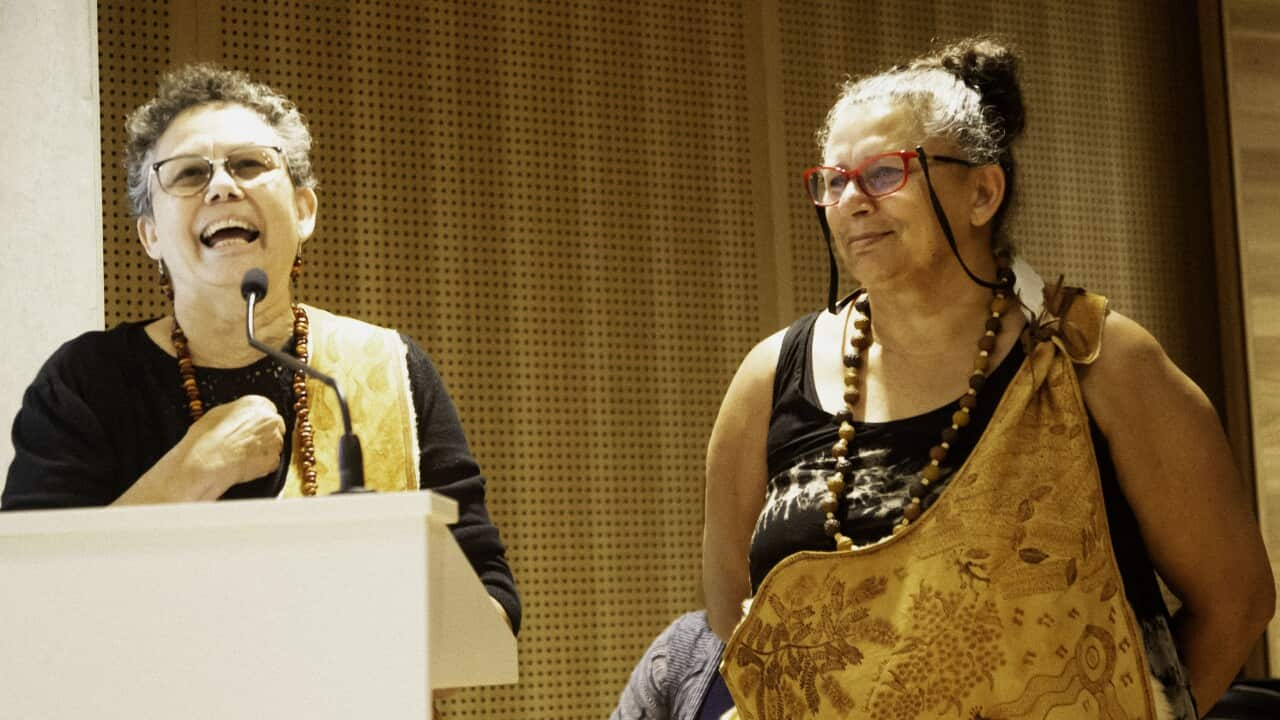In the heart of Wiradjuri Country on the site of a former scout camp, bushland surrounds a single standing demountable.
Teacher Tim Bennett is standing at the door as around a dozen First Nations boys pile off the bus and into the classroom.
“Grab your clapsticks!” Mr Benett instructs as they take their seats.
It’s the start of a new school day, but this isn’t any ordinary school: these boys are part of the Ngurang-gu Yalbilinya (NgY) program – Wiradjuri for ‘place of learning’.
14-year-old Steven takes his seat at the back of the classroom. Before starting the program he struggled at school.
“I was getting in a lot of fights and sometimes I would get a suspension warning or two. I’d be wagging,” he told NITV News.
Now he’s the first to put his hand up in class and says the program put him back on track.
“The teachers here really helped me ... through the tough times,” he said.
Books and bush combined

Thumbs up all round: the program has seen excellent attendance rates from enthusiastic students.
As well as usual school subjects like maths and English, students also learn Wiradjuri language, traditional wood carving, ceremonial song and dance, and painting.
Since it started two and a half years ago, it has seen astounding success: attendance rates have almost doubled from 44 per cent to 94 per cent.
Ricky Ahsee is one of the cultural advisors of the program. He teaches traditional dances each week and has seen the program's impact firsthand.
“At first they were a bit shy ... but with the cultural stuff it really brings them out of their shell,” he told NITV News.
“Most of them don’t know much about their cultural background. Once you teach them, it gives them a sense of identity.
"I think if you don’t know your past, you don’t know your future.”
Wrap-around support
Mr Bennett says a key to the success of the program is the so-called wrap-around support they provide the students, which goes beyond the classroom.
“It's not just an academic need, if the child or the family suffered trauma that could also affect the student engaging in mainstream classes. So we have to address that as well,” he said.
After it was abandoned by one of the local high schools, the program was revived two years ago with the help of the Orange Local Aboriginal Land Council (OLALC).
“We had students and parents coming to us, we had children in tears, we had ex-students coming, saying how great the program was," said Annette Steele, CEO of OLALC.
"So we fought back and worked with the department to get the program off site.”

Tim Bennet says the program has been a success, in part due to the emotional support they provide students outside of school.
Teachers work closely with local Aboriginal community-controlled services to ensure the students and their families receive the support they need.
The students receive regular health checks from the Orange Aboriginal Medical Centre, healthy eating is encouraged with donated fruit, and families are engaged through the Local Orange Aboriginal Land Council.
'We've always had the answers'
33 students are on the waiting list to get into the program, and many other communities want help.
At the Local Orange Aboriginal Land Council, work continues to try to get the program expanded.
"Some communities are crying out for programs to actually keep those kids in school," said Des Barton, a project officer with the NSW AECG.
"The success of the program in Orange shows us that Aboriginal people have always had the answers."
Discussions are underway with the Department of Education over a possible expansion, but teacher shortages and a lack of funding have hampered efforts to replicate it in other regional towns.
The Point airs Tuesday 15 August at 7.30pm on NITV













